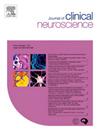新西兰的脑垂体手术:一个神经外科医生的病例,共1,224例手术
IF 1.8
4区 医学
Q3 CLINICAL NEUROLOGY
引用次数: 0
摘要
垂体神经内分泌肿瘤(PitNETs)是中枢神经系统最常见的肿瘤之一,但有关手术结果的数据在新西兰(NZ)有限。本研究报告了23年单外科医生垂体手术的病例系列。回顾性分析1999年8月至2023年7月间进行的1224例垂体手术。分析患者人口统计学、肿瘤特征、并发症和长期结果。统计分析包括单变量和多变量模型。垂体神经内分泌肿瘤(PitNETs)占病例的88% (n = 1,087),包括612例无功能肿瘤,175例gh产生肿瘤和112例acth产生肿瘤。经蝶窦手术治疗PitNETs的并发症包括术后脑脊液(CSF)泄漏(7.3%)、永久性尿崩症(3.4%)、脑膜炎(2.4%)和视力下降(1.2%)。颈动脉损伤、中风和30天内死亡的发生率均低于1%。在554个监测成像的无功能PitNETs中,20%在中位随访3.7年(IQR 1.6-7.7)后复发,10%需要再次手术。术后5年复发率为60%,术后10年复发率为90%。年龄具有保护作用,每增加一岁风险就会降低(HR = 0.98, p = 0.005)。海绵体浸润与复发密切相关(HR = 2.9, p <;0.001)。没有观察到种族和复发之间的显著关联,包括Māori和Pasifika患者。76%的微腺瘤患者肢端肥大症手术缓解(中位随访时间:4.8年;IQR: 1.0-6.8)和75%的大腺瘤(中位随访时间:4.3年;差:1.5 - -8.5)。在库欣病中,82%的微腺瘤获得缓解(中位随访:3.1年;IQR: 0.8-9.2)和75%的大腺瘤(中位随访:4.0年;差:0.6 - -8.7)。这些发现表明,术后结果、并发症发生率、激素改善和肿瘤控制与国际标准相当。本文章由计算机程序翻译,如有差异,请以英文原文为准。
Pituitary surgery in New Zealand: A single neurosurgeon case series of 1,224 operations
Pituitary neuroendocrine tumours (PitNETs) are among the most common tumours of the central nervous system, yet data regarding surgical outcomes is limited for New Zealand (NZ). This study presents a 23-year single-surgeon case series of pituitary surgery. A retrospective analysis of 1,224 pituitary operations performed between August 1999 and July 2023 was conducted. Patient demographics, tumour characteristics, complications, and long-term outcomes were analysed. Statistical analyses included univariate and multivariate models. Pituitary neuroendocrine tumours (PitNETs) accounted for 88 % of cases (n = 1,087), including 612 non-functioning, 175 GH-producing, and 112 ACTH-producing tumours. The complications of transsphenoidal surgery for PitNETs included postoperative cerebrospinal fluid (CSF) leaks (7.3 %), permanent diabetes insipidus (3.4 %), meningitis (2.4 %), and visual deterioration (1.2 %). Carotid injury, stroke, and death within 30 days each occurred in less than 1 % of cases. Among 554 non-functioning PitNETs with surveillance imaging, 20 % recurred after a median follow-up of 3.7 years (IQR 1.6–7.7), with 10 % requiring reoperation. Recurrence was detected in 60 % of cases by five years and 90 % by ten years, of those who recurred. Age was protective, with each additional year reducing risk (HR = 0.98, p = 0.005). Cavernous invasion strongly predicted recurrence (HR = 2.9, p < 0.001). No significant association between ethnicity and recurrence was observed, including among Māori and Pasifika patients. Surgical remission in acromegaly was achieved in 76 % of microadenomas (median follow-up: 4.8 years; IQR: 1.0–6.8) and 75 % of macroadenomas (median follow-up: 4.3 years; IQR: 1.5–8.5). In Cushing’s disease, remission was achieved in 82 % of microadenomas (median follow-up: 3.1 years; IQR: 0.8–9.2) and 75 % of macroadenomas (median follow-up: 4.0 years; IQR: 0.6–8.7). These findings demonstrate postoperative outcomes, complication rates, hormonal improvement, and tumour control, comparable to international standards.
求助全文
通过发布文献求助,成功后即可免费获取论文全文。
去求助
来源期刊

Journal of Clinical Neuroscience
医学-临床神经学
CiteScore
4.50
自引率
0.00%
发文量
402
审稿时长
40 days
期刊介绍:
This International journal, Journal of Clinical Neuroscience, publishes articles on clinical neurosurgery and neurology and the related neurosciences such as neuro-pathology, neuro-radiology, neuro-ophthalmology and neuro-physiology.
The journal has a broad International perspective, and emphasises the advances occurring in Asia, the Pacific Rim region, Europe and North America. The Journal acts as a focus for publication of major clinical and laboratory research, as well as publishing solicited manuscripts on specific subjects from experts, case reports and other information of interest to clinicians working in the clinical neurosciences.
 求助内容:
求助内容: 应助结果提醒方式:
应助结果提醒方式:


